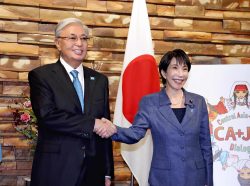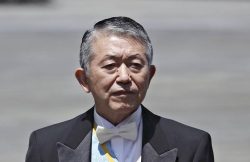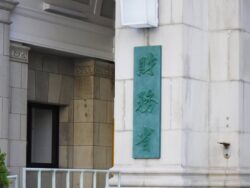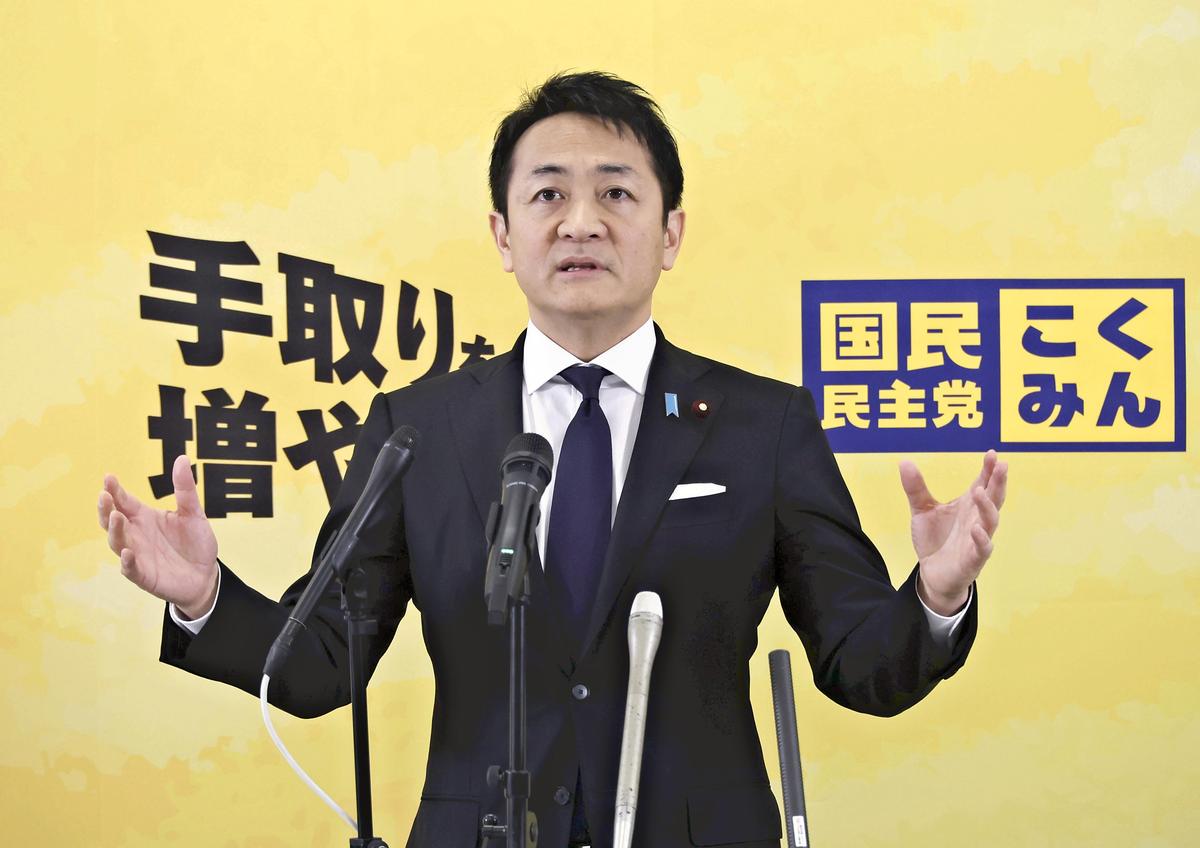
Democratic Party for the People leader Yuichiro Tamaki holds a press conference on Mar. 25 at the Diet.
8:00 JST, April 5, 2025
A crisis looms for Prime Minister Shigeru Ishiba.
In the House of Representatives election last October, the Liberal Democratic Party and its coalition partner Komeito suffered a crushing defeat, losing their majority in the lower house. Ishiba has since made repeated concessions to the opposition parties, such as expanding the scope of free high school tuition and raising the “annual income barrier” (the threshold for the imposition of income tax), but his administration has continued to struggle. Looking at the Cabinet’s approval rating in Yomiuri Shimbun opinion polls, the highest figure was 51% when the Cabinet was formed in October. Since then it has hovered around 40%.
This difficult situation has been compounded by a scandal of Ishiba’s own making. When it was discovered that he had given vouchers worth ¥100,000 each to 15 LDP members of the House of Representatives with whom he had dinner, his approval rating plunged to 31%, the lowest since his inauguration, according to a March survey.
Ishiba’s ability to attract support through his image of political purity has visibly declined. Although senior LDP members and potential Ishiba challengers are not openly calling for his removal, a former cabinet minister said: “Everyone thinks he can’t hold on much longer. If one more problem arises, it wouldn’t be surprising if his administration collapsed.”
Some in the government and the ruling party are pointing out the similarities between the current political situation and the situations in 1989 and 2001.
The triennial House of Councillors election and the quadrennial Tokyo Metropolitan Assembly election coincide every 12 years. Specifically, in the Year of the Snake. In past cases when the strength of the government was declining, as it is this year, the political situation shifted significantly in the run-up to the two political battles held in the summer.
The most momentous change was in 1989. Amidst the headwinds blowing against the LDP due to the Recruit scandal and the introduction of the consumption tax, Prime Minister Noboru Takeshita resigned in April in exchange for the passage of the budget. His successor, Prime Minister Sosuke Uno, suffered heavy defeats in the Tokyo Metropolitan Assembly and upper house elections. Socialist Party leader Takako Doi, who drove the LDP into minority status in the upper house, became remembered for the famous phrase, “The mountain has moved.”
There was also a change of prime minister in 2001. As support for Prime Minister Yoshiro Mori declined due to his sloppy handling of the Ehime Maru accident and other issues, calls for his resignation grew within the LDP. In April he was forced to step down. Under Prime Minister Junichiro Koizumi, who was elected in the party presidential election, the LDP recovered its support rating and won both the House of Councillors election and the Tokyo Metropolitan Assembly election.
As LDP members begin to discuss who will replace Ishiba, it is being whispered that it will be neither former economic security minister Sanae Takaichi nor former Environment Minister Shinjiro Koizumi, who both ran against Ishiba in the LDP presidential election last September, but rather Yuichiro Tamaki, the leader of the third largest opposition party, the Democratic Party for the People.
There are no major calls for Ishiba to step down within the LDP because many people pessimistically believe it would be difficult to break the current deadlock by calling a snap election and taking a decisive step forward, as both Takaichi and Koizumi lack the charisma to be the new face of the party.
On the other hand, the DPFP has been able to take advantage of public opinion, as people struggle with rising prices, through its campaign promise of “increasing the amount of money in the hands of the people.” In a survey conducted in March, the DPFP’s support rate increased by 4 points from the previous survey to 12%, double that of the Constitutional Democratic Party of Japan, the largest opposition party.
In November last year, it was reported that Tamaki had had an affair, and he was subsequently suspended from his position for three months. However, the political damage was not great.
In recent months, there has been speculation that Komeito is strengthening its cooperation with the DPFP over the issue of the annual income barrier and political donations by corporations and organizations, with an eye to a future LDP-Komeito-DPFP coalition government.
If the LDP suffers a major defeat in this year’s upper house election, there is talk of a scenario in which the LDP and Komeito would form a new coalition government with the DPFP, which is likely to make gains in the election and increase its seats. The envisaged coalition would then have a majority in both the House of Representatives and the House of Councillors.
In 1993, the LDP remained the largest party in the lower house election, but it fell short of a majority. A coalition government was formed by eight non-LDP, non-Communist parties and factions, with Morihiro Hosokawa, the leader of the Japan New Party, the fifth largest party, becoming prime minister.
The idea of a new three-party coalition also emerged under the Kishida administration. But at that time, Komeito was not keen on reorganizing the coalition, expecting it to lead to a decline in its own influence. However, it seems Komeito has changed its stance and decided it would be better to work with the DPFP, which is gaining momentum in line with the times.
There are many hurdles to overcome in realizing this plan, such as how to sort out the relationship with the Japanese Trade Union Confederation (Rengo), which supports the DPFP. However, if the LDP makes a move without worrying about appearances, such as promising Tamaki the position of prime minister, LDP officials believe there is a good chance Tamaki will accept. This is because Tamaki has always been positive about participating in a coalition government, and his views on the Constitution, foreign policy and security policy are closer to those of the LDP than the CDPJ.
After the upper house election, there will probably be moves to bring the opposition parties together, but Tamaki believes that they cannot cooperate unless they agree on basic policies, such as their views of the Constitution.
Momentous changes are said to be likely in the Year of the Snake, based on the image of snakes repeatedly shedding their skin. At the end of last year, Tamaki posted his desire in 2025 to “change the way politics is conducted, which is mired in old customs and traditions,” citing the Taika Reforms of 645 — another Year of the Snake — which reformed the Japanese political system to put the emperor at the center. A veteran LDP member of the Diet shared his own reading of the situation: “The direction of this year’s political situation is in chaos, but one thing is certain: A change of prime minister will occur.”
Political Pulse appears every Saturday.
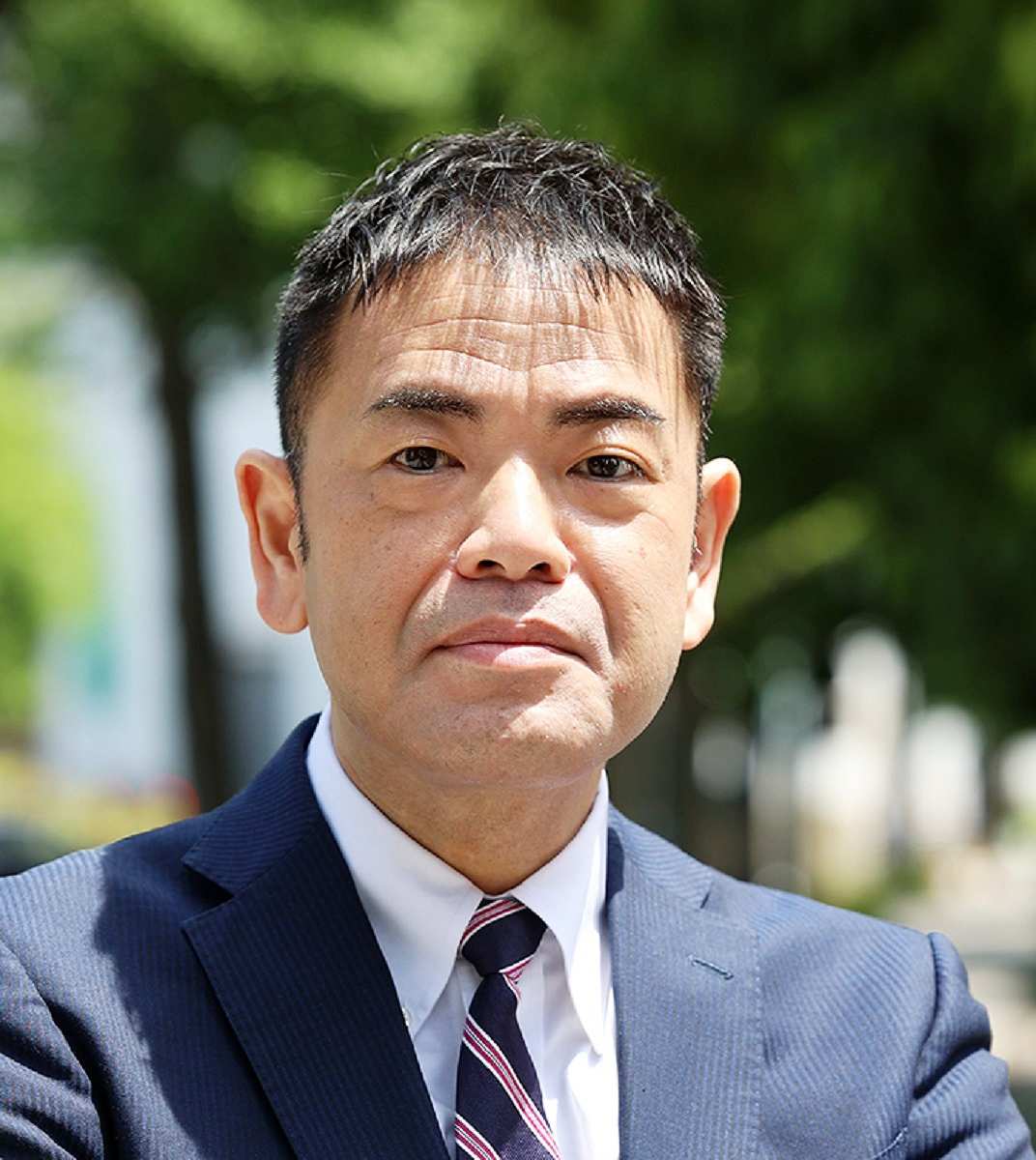
Shuhei Kuromi
Shuhei Kuromi is a deputy editor in the Political News Department of The Yomiuri Shimbun.
"Editorial & Columns" POPULAR ARTICLE
-

Violations of Subcontract Law: Major Automakers Must Eliminate Old Practices
-

Local Governments’ Tax Revenues: Devise Ways to Correct Imbalances in Tax Sources
-

Heavy Rains in Asia: Support for Victims, Flood-Control Measures Urgently Needed
-

5 Japanese Business Dinner Mistakes to Avoid — and What They Taught Me About Business in Japan
-

New Nuclear Threat: China Seeking to Follow U.S., Russia in Military Expansion
JN ACCESS RANKING
-

Keidanren Chairman Yoshinobu Tsutsui Visits Kashiwazaki-Kariwa Nuclear Power Plant; Inspects New Emergency Safety System
-
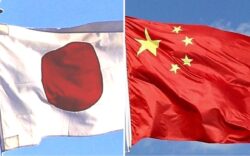
Imports of Rare Earths from China Facing Delays, May Be Caused by Deterioration of Japan-China Relations
-

University of Tokyo Professor Discusses Japanese Economic Security in Interview Ahead of Forum
-

Japan Pulls out of Vietnam Nuclear Project, Complicating Hanoi’s Power Plans
-

Govt Aims to Expand NISA Program Lineup, Abolish Age Restriction








